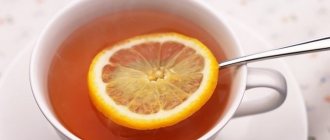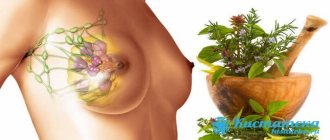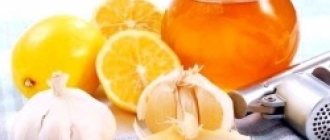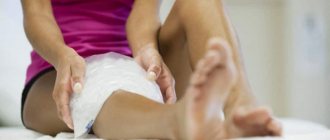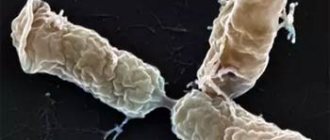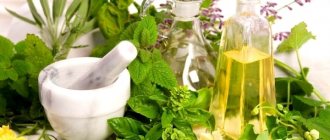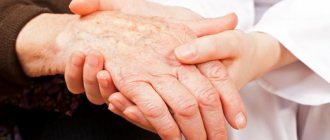What is mastitis?
The pathology is popularly called breastfeeding and is an inflammatory process of the mammary gland, which is infectious in nature and has the ability to spread rapidly. If a woman is not promptly provided with qualified assistance, there is a risk of purulent destruction of the glandular and adjacent tissues. Transfer to other organs and systems, blood poisoning is possible.
On a note! Inflammation of the mammary gland is less common in men and children.
In most cases, breastfeeding develops in nursing women 1 month after childbirth. If the condition is caused by stagnation of milk, cracked nipples, then it is called lactation mastitis. Often the problem is observed only on one side, but bilateral inflammation is possible. Non-lactational breastfeeding is not associated with the period of breastfeeding, and is mainly observed in women over 45 years of age.
Symptoms
It is important to identify the disease in a timely manner and begin treatment on time. The main symptoms of the initial (serous) phase of mastitis are:
- heaviness and tension in the infected chest;
- a moving, painful lump with a clear outline can be felt;
- pumping is painful, but milk comes out freely;
- a low-grade fever of 37-38°C rises, sometimes a sudden onset is possible with a thermometer reading of 38-39°C;
- the affected area of the mammary gland contains serous fluid.
In the next phase, a painful infiltrate without clearly defined boundaries is formed. The breasts enlarge, but the skin remains unchanged. In the absence of adequate treatment, inflammation progresses to a destructive stage. In this case, the tissues of the damaged area resemble a sponge soaked in pus or a honeycomb of bees. With purulent mastitis, a sharp deterioration in the health of the nursing mother occurs due to the entry of toxins into the blood. Temperature of 38-40°C, weakness, headache, breast enlargement and tension are observed. The skin turns red, the veins dilate, and there may be pain and changes in the size of the axillary lymph nodes.
On a note! Sometimes the development of abscess, infiltrative-abscess, phlegmonous, gangrenous mastitis occurs. In these cases, medical assistance is especially necessary.
Extraordinary methods of treating mastitis
As soon as the first signs of inflammation of the mammary gland appear (redness of the skin, thickening or pain while feeding the baby), you need to take an isotonic solution, moisten a gauze pad in it and apply it to the problem breast until it dries completely. Such applications must be made at least 5 per day. Instead of an isotonic solution, you can use a strong saline solution prepared from 200 ml of water and 2 tablespoons of regular salt.
From ordinary beets you need to “extract” 150 liters of juice, mix it with 50 ml of vegetable oil (preference should be given to sea buckthorn), 1 tablespoon of chopped golden root and 100 grams of grated carrots. The resulting mass should be applied to the skin of the affected breast, focusing on the location of the inflammatory process.
If mastitis occurs in spring and early summer, then you need to find potato flowers (they can be white or purple), collect them in the amount of 1 tablespoon and pour 200 ml of boiling water. The product is infused for 20-30 minutes, then consumed ¼ cup 2 times a day.
Please note: potato flowers can provoke an exacerbation of chronic diseases of the gastrointestinal tract, so you need to be extremely careful when using this remedy.
If mastitis is just beginning, and there is no lump yet, and a woman only feels stagnation of milk in her breasts, then a pulp of boiled beets, black bread crumb (in equal proportions) and 3-5 drops of sesame seed oil will help her . This remedy is applied to the problem chest, left for 2-3 hours and then washed off with warm water.
If the disease is already actively progressing and is in an advanced stage, then you will need to prepare the following remedy:
- melted wax in the amount of 30 grams mixed with 5 drops of camphor oil, 4 drops of rose oil and 10 grams of wood ash;
- mix everything thoroughly and heat in a water bath so that the mass is “good, but tolerably hot.”
The mass is applied to the sore breast three times a day.
Mastitis is a well-studied disease that can be easily cured with folk remedies. Here it is important to understand that you will first need to visit a specialist and only after that use some of the folk remedies for therapy. You should not change the remedy every day - the therapeutic effect is unlikely to take place in this case, but it would be appropriate to consult with your doctor about the choice. Our article describes proven ones. safe and approved by official medicine for the treatment of mastitis from the category of “traditional medicine”, so they can be used without fear of the development of complications and/or undesirable consequences.
Tsygankova Yana Aleksandrovna, medical observer, therapist of the highest qualification category
38, total, today
( 189 votes, average: 4.72 out of 5)
Breast tuberculosis in women: causes, symptoms, treatment
Inflammation of the nipple: causes, symptoms, treatment
Related Posts
Reasons for the development of mastitis
During the period of natural feeding, inflammation of the mammary gland can develop with excessive production of breast milk or prolonged lactostasis. Other possible causes include poor breastfeeding technique, wearing tight underwear, decreased immunity, poor personal hygiene, and hormonal imbalances.
A necessary condition is the presence of pathogenic microflora. The source can be nipple cracks due to improper attachment of the baby to the breast. Mastitis sometimes occurs as a consequence of a pathological pregnancy or difficult childbirth. Factors that negatively affect the health of a nursing woman are postpartum depression, psychosis, insomnia, and exacerbation of psychosomatic diseases.
Regular pumping is a must for mastitis
Causes
There are many factors that cause mastitis. Staphylococcus aureus most often leads to the lactation form of the disease . After harmful bacteria get on the skin, the appearance of pathology is provoked by reasons such as:
- mastopathy;
- post-operative scarring;
- features of the anatomical structure of the organ;
- difficult pregnancy;
- complicated childbirth;
- chronic diseases;
- disturbed sleep;
- postpartum depression.
Most often, inflammation of the mammary glands occurs in women who have given birth to their first child. They lack the skills to breastfeed and express milk. Breast congestion leads to the development of an inflammatory process.
A non-lactating breast appears when the immune system is weakened. Her reasons are:
- hypothermia;
- severe infections;
- concomitant pathologies;
- neuropsychic and physical overload;
- silicone implants;
- chest injuries.
The provoking factor in this case is bacterial infection. The causative agent is the same as for lactating infants - staphylococcus.
Drug therapy
If symptoms of mastitis appear, you should consult a doctor for an accurate diagnosis and prescription. Self-medication is dangerous, since there may be serious consequences for the woman and side effects for the baby. Each stage of pathology requires certain manipulations, including surgical intervention.
In case of lactation mastitis in a nursing mother, it is necessary to regularly express breast milk at home; it is forbidden to feed the baby with it. In the serous form, the doctor may prescribe No-shpa and Oxytocin to relieve spasms and increase fluid outflow. Novocain is used against severe pain, and infection is fought with a course of antibiotics. Additionally, it is recommended to take antihistamines and medications that restore intestinal microflora.
Prevention of mastitis
Such an unpleasant disease as mastitis of the mammary gland can be completely avoided if you follow some simple rules, namely:
- After feeding the baby, milk must be expressed carefully.
- Before giving your baby the second breast, you need to completely empty the first one. This is a prerequisite to prevent the development of mastitis.
- If the baby has enough milk from one breast, the next feeding should be done with the other.
- The process should be controlled. The baby should not just suckle at the breast, but receive milk from it.
Breast massage
This procedure will help a nursing woman get rid of unpleasant sensations at the initial stage. Massage for mastitis at home is carried out every 2-3 hours, as well as after expressing breast milk, to open clogged ducts. First you need to relax the breast tissue, making smooth spiral-like movements from the edges to the center with your fingertips.
After preparation, you should begin to target the dense and painful areas. Rub each seal clockwise from the middle to the periphery with light, smooth movements. After this, move to the axillary region, to the junction of the muscles of the shoulder girdle and pectoral muscles.
To improve the flow of milk and prevent the development of mastitis, it is enough to massage the breasts for 5-10 minutes. Pressing should be smooth, effortless. Hands are warm, previously thoroughly washed with soap. If desired, you can additionally use oil mixtures or creams against this pathology according to folk recipes.
Breast massage helps:
- rush of blood;
- supply of nutritional components to cells;
- relaxation of the milk ducts;
- strengthening muscles;
- reduction of compacted areas;
- eliminating pain.
Herbal ointment for treating mastitis
To prepare the ointment, you need to combine Japanese sophora, globulus eucalyptus, and medicinal clover (in equal parts). The resulting mixture in the amount of three tablespoons should be mixed with boiling water (200 ml is enough) and boiled for 5 minutes. Then the product needs to be cooled and strained. Add 100 grams of butter to the resulting broth. The prepared ointment for mastitis is applied using tissue napkins to the chest (both on the affected areas and on healthy ones).
Treatment of mastitis with folk remedies
Such methods help well at the initial stage of the disease. In the future, they are used as additional to drug treatment along with physiotherapy. In most cases, the main components are always at hand, so a nursing mother just needs to choose the most suitable option for the given situation.
The most common folk remedies for mastitis include:
- exposure to cold;
- compresses;
- decoctions of medicinal plants;
- ointments;
- applying gruel, cakes to the mammary gland.
On a note! Compresses for mastitis are considered one of the most effective methods. In this case, the list of active ingredients is much longer than for lactostasis, since breastfeeding is prohibited in this case.
Cold on the chest
Often, to treat mastitis at home, apply ice wrapped in a towel to the inflamed area. The method helps with lactostasis; in the case of breastfeeding in the serous form, it reduces unpleasant symptoms and stops the process. By applying cold to the sore breast, you can slightly delay the visit to the doctor if for some reason it is not possible to do it right away.
Camphor oil
The product has anti-inflammatory, antibacterial, and analgesic effects. Thanks to this, it stops inflammation and reduces pain. Before using camphor oil for mastitis, it is advisable to consult a doctor, since there are contraindications and side effects may develop.
The medication is prohibited for use for epilepsy, diseases of the cardiovascular system, allergies, individual intolerance, and skin rashes. When treated with camphor, dizziness, headache, increased nervous excitability, convulsions, and cardiac dysfunction may occur.
Compresses for mastitis can be made using a sterile bandage, cotton cloth or cabbage leaves. The healing agent is applied to the damaged areas, covered with a bag, and wrapped in a scarf. It is advisable to do it before bed and leave it overnight.
Regardless of the material chosen, apply any of the mixtures to it:
- baby cream and camphor oil in a ratio of 2:1;
- butter, honey, camphor – 1:1:1;
- camphor alcohol (10-15 drops), natural honey (25 g), chopped garlic cloves (10 g);
- Vishnevsky ointment with 5-7 drops of camphor;
- melted propolis with 1 tbsp. l. oils
In addition to compresses, rubbing the chest against mastitis, carried out 2-3 times a day, is popular. To enhance the effect, you can add sea buckthorn, chamomile or arnica, peppermint, tea tree, eucalyptus, and lavender oils to camphor. Introducing sage will help reduce milk production, which is necessary if inflammation is due to this cause.
Vinylin
The drug has anti-inflammatory, antimicrobial, enveloping effects, improves tissue regeneration. The balm should be moistened with a napkin or applied directly to the damaged area. The medication promotes epithelization and restoration of damaged areas of the skin, so it is also used to lubricate cracks in the nipples.
Honey cake
This is one of the safest and most effective methods of getting rid of mastitis. Honey cake relieves pain and swelling, stops inflammation, softens the skin, and makes it easier to express milk. To prepare it, you need to mix natural honey and any flour to form a thick dough. Additionally, you can add garlic or baked onions to the mass.
The procedure should be done before bedtime. Apply a flat cake to the affected mammary gland, cover with gauze or a cabbage leaf, and carefully secure with a scarf or cotton bra. Leave it overnight, take a shower in the morning, and express milk.
On a note! Any warming procedures, including honey cakes, are prohibited in case of a purulent form of the disease.
To prepare the flatbread you will need honey and flour.
Alcohol or vodka compress
An alcohol compress is used to eliminate swelling, provide anti-inflammatory and warming effects, and reduce pain. But it is permissible only at the stage of lactostasis; during the transition to the serous stage of the infant, it is undesirable to use it in order to avoid complications. A compress with vodka for mastitis disrupts the release of the hormone oxytocin, which helps the secretion of milk from the mammary gland. As a result, the problem gets worse and other breast problems may appear.
Magnesia compress
Magnesium sulfate can be purchased at any pharmacy. To make a compress, place 1 ampoule of magnesia in warm water for several minutes. Open the container and pour the liquid onto several layers of gauze or cotton cloth. Apply to the sore breast and secure with a bra. It is advisable to wrap yourself in a warm scarf or put on a woolen sweater, since hypothermia must not be allowed.
On a note! If there are problems with natural feeding, and after treatment it is planned to resume lactation, then use magnesia no more than once a day.
Dimexide compress
The medication is characterized by anti-inflammatory, antipyretic and antimicrobial effects. The substance penetrates deep into the tissue, which makes it very effective. For a compress, it is recommended to dilute dimexide with boiled water. Moisten gauze or cloth with the solution and apply to the painful area. Cover the top with a bag and put on a bra. This method is used in complex therapy of mastitis.
Salt compress
Ingredients:
- regular or sea salt – 35 g;
- water – 50 ml.
Technology:
Heat the water to about 40°C, dissolve the salt. Moisten a cloth or gauze in the resulting liquid; you can use napkins with holes made for the nipples. Apply to breast for 2-3 hours.
On a note! You should not use a salt compress if there are cracks or wounds.
Laundry soap
Treatment of mastitis with folk remedies can be tested on yourself. Sometimes it is recommended to use traditional laundry soap without chemical additives and fragrances. The product does not cause allergies, has antibacterial, disinfectant, decongestant effects, but can lead to burning and irritation on the skin.
The easiest way to use it is to moisten the bar in warm water and spread it on the affected areas with a thick layer. Sometimes a dissolving compress is made at night for lumps in the chest. The soap should be grated on a fine grater, mixed with 1-2 yolks, and formed into a cake. Cover the top with cellophane and insulate it.
Cabbage leaf
Biologically active substances contained in cabbage juice help reduce inflammation, relieve pain, and reduce swelling. As a result, the patency of the mammary gland ducts is restored and the outflow of lymph increases. If you use cabbage leaves when the first symptoms of mastitis appear, the problem can be solved in just a couple of days.
It is recommended to take a large leaf plate and rinse with warm water. Beat off the thick parts from the inside. It is advisable to use several leaves. Apply a compress after expressing milk, cover the cabbage with a clean cloth. Keep it on for about 5 hours, then remove it and wash your breasts.
On a note! If the nursing mother does not have allergies, it is recommended to spread a thin layer of natural honey on the inside of the leaf. This compress option is more suitable for night time.
Pumpkin or melon compress
Ingredients
- pumpkin or melon pulp – 450 g;
- milk – 1 l;
- sugar – 1 tbsp. l.;
- water – 1 l.
Recipe
- Boil the pumpkin until half cooked;
- Pour in milk;
- Add sugar;
- Bring over low heat until thickened;
- Stir the resulting mass thoroughly and cool almost completely;
- Apply the poultice to the sore chest.
Sage
The medicinal plant has the ability to suppress the growth of pathogenic microflora and restore hormonal levels. While taking sage, breast milk production decreases. A decoction or infusion can be prepared from the flowers and leaves and consumed cold or hot, regardless of meals, 3 times a day. The course of treatment for mastitis with sage is 1 week.
Alder
The raw materials are used for external use. To make the ointment, collect sticky black alder leaves and completely fill a baby food jar with them. Add melted butter to the edges. Place the container in a water bath and cook with the lid closed for 20 minutes. After complete cooling, treat the sore breast. It is enough to smear 2-3 times a day.
If the cause of mastitis is hormonal imbalance, it is advisable to prepare an infusion. Finely chop alder leaves, add about 1 tsp, pour 1 tbsp. boiling water Cover the container with a lid and wrap it with a scarf or towel. In 20 minutes. infusion is allowed to be used. Soak a cotton napkin in the product and apply it to your chest.
Raspberries
The leaves of the plant help reduce fever, cure inflammation, help remove waste and toxins, and strengthen the immune system. Raspberries are often included in various mixtures for preparing a decoction or infusion. Traditional medicine for mastitis recommends the following collection:
- raspberry leaves – 2 tsp;
- St. John's wort – 1 tsp;
- black currant leaves - 2 tsp;
- sage – 1 tsp;
- lingonberry leaves – 2 tsp;
- water – 1l.
To prepare the medicine, all dry ingredients must be thoroughly mixed. 2 tbsp. l. Pour boiling water over the resulting mixture. Place on low heat, bring to a boil, simmer for 10-12 minutes. After this, leave under a closed lid for 12-14 hours. Strain the broth, take 0.5 tbsp. 4-5 times a day for 10 minutes. before meals. The course of therapy is 10-12 days.
Treatment at home
Treatment for breastfeeding begins after consulting a doctor. Most medications should not be used while breastfeeding. Therefore, mastitis is treated with folk remedies, for the preparation of which honey, plants, and camphor are used.
Cabbage leaves
Cabbage effectively fights breastfeeding. The leaves of the plant are used for applications. Compresses are made like this:
- A simple way to treat mastitis: squeeze the juice from cabbage and lubricate the sore breast with it.
- The sheet is beaten, placed on the chest, and a cotton or linen bra is put on. The compress is applied overnight. This method is used to treat purulent, acute mastitis and all other forms of the disease.
- For mastitis, cabbage leaves are crushed to a pulp and combined with yogurt. The application is changed periodically.
- The sore breast is treated with beet juice, a cabbage leaf is placed on it, and secured with a bandage.
- This method helps older women get rid of the disease. Softened butter is mixed with a small amount of salt. The mixture is distributed over a cabbage leaf and fixed on the affected breast. Apply a compress before going to bed. Remove the application in the morning.
- A sheet scalded with boiling water should be applied to the breast after expressing milk. Keep the application until the sheet cools down. The compress relieves swelling, relieves pain, and stimulates milk flow .
Cabbage fights swelling, inflammation, and resolves seals.
Oils
To treat mastitis at home, use camphor and castor oil. They make applications with them.
- Baby cream is combined with camphor oil in a 1:1 ratio. The mixture is rubbed into the sore chest.
- Camphor oil is distributed over a cabbage leaf and secured to the chest.
- Camphor is mixed with vodka. The application is applied for 15 minutes.
- Combine camphor and sea buckthorn oils (1:1). The compress made in the evening is removed in the morning.
Camphor oil for mastitis helps relieve pain and eliminate the inflammatory process. Thanks to it, compactions are reduced.
Castor oil quickly relieves aggravation. After rubbing it into the chest, apply a film and a warm bandage.
For older patients, mint oil helps get rid of mastitis. The product stimulates blood circulation and fights swelling. Add 3-5 drops of mint essential oil to 1 tablespoon of vegetable oil. The mixture is rubbed into the chest at night.
Honey
For mastitis, make applications with honey:
- Ointment. Combine corn oil, Kalanchoe and aloe juice in equal quantities. Insist for 12-14 hours in the cold. Crystallized honey is added to the product in such an amount as to form a thick ointment. The drug is placed on a napkin and secured to the chest. The compress relieves pain and dissolves lumps.
- Honey and onion mixture. Honey is added to the juice released when the onion is baked. The product is used for applications.
- Honey cake. Form a ball from flour and honey (2:1) and roll it out. The honey cake is attached to the chest in the evening and left until the morning.
Applications with salt
Women should know how mastitis is treated with salt compresses. This is an affordable way to get rid of the disease at home. Salt applications are effective for mild and advanced forms of breastfeeding. Salt draws out exudate, relieves swelling, inflammation, and improves blood circulation .
The method of preparing a salt compress is simple: heat the water to 50 degrees, dissolve 1 tablespoon of salt in it. Slots are made in a cotton napkin for the nipples (they will avoid irritation of the epithelium in this area), the fabric is soaked in a solution, placed on the chest, covered with polyethylene, and secured with an insulating bandage. Remove the application after cooling.
Applications for purulent chest
The following methods help cure purulent mastitis:
- Add 5 tablespoons of parsley and 1 tablespoon of flaxseed flour to 0.5 cups of milk. The mixture is simmered over fire until it thickens. The product is placed in a linen bag, 2 tablespoons of sugar are poured into it, and secured to the chest.
- Coltsfoot or burdock leaves are scalded and secured to the chest with a bandage.
- Pumpkin is boiled in milk. Pour a small amount of sugar into the thick mass. The product draws out purulent exudate and relieves inflammation.
- Cottage cheese and honey are mixed in equal quantities, a cake is formed, and applied to the chest overnight.
Herbal extracts
When treating mastitis at home, compresses alternate with lotions made from plant extracts. At the same time, drink herbal teas and herbal decoctions. They are prepared using the following recipes:
- An infusion is made from sweet clover or alder: 2 tablespoons of the raw material are brewed with 500 ml of boiling water, filtered after 30 minutes. A napkin soaked in the extract is attached to the chest. Change applications at intervals of 2 hours.
- To wipe the chest, use an extract of Japanese Sophora. Take 2 tablespoons of the plant, pour 500 ml of boiling water, simmer for 5 minutes. After 1 hour, filter.
- Herbal tea made from lemon balm and mint. Take 1 tablespoon of herb, brew it in 0.5 liters of boiling water, consume after 1 hour.
- Sage tea. I pour 1 teaspoon of herb into 200 ml of boiling water and let it brew. Consume hot. The extract reduces milk production.
Compresses are a warming procedure. Doctors note that heat applications can aggravate the disease, so they should not be used during exacerbation and fever. To avoid unwanted consequences, use the remedies recommended by the doctor. In severe forms of breastfeeding, traditional methods are ineffective, and the disease is treated surgically.
Prevention
Problems can be avoided if you monitor your well-being, breastfeed correctly, and maintain hygiene. Breastfeeding that develops in a nursing woman must be treated immediately, without further development, otherwise it may become a chronic form of the disease and the appearance of benign changes in the mammary glands. Prevention of mastitis during breastfeeding includes feeding on demand, wearing clean and comfortable underwear, and keeping the mammary glands clean. It is important to properly attach your baby to the breast to avoid injury.
Prevention of mastopathy is:
- breastfeed your child for at least a year;
- maintaining normal hormonal levels;
- proper organization of lactation;
- balanced diet;
- comfortable underwear made from natural fabrics;
- lack of stress and overwork;
- avoiding chest injury;
- regular visits to the mammologist.
Compresses for mastitis: rules of use
Compresses are the main method of traditional medicine to get rid of this disease. They are able to relieve a woman of nagging pain and a feeling of “bloating” in her breasts. The basic principle of using compresses in this case is the exclusion from the list of components used of dangerous substances that can be used either unknowingly or consciously.
As mentioned above, it is strictly forbidden to warm the breasts during mastitis. That is, compresses for mastitis should be applied warm or cool, but not hot. You should be aware that there is an inflammatory process in the mammary glands, and heating will only worsen the situation.
